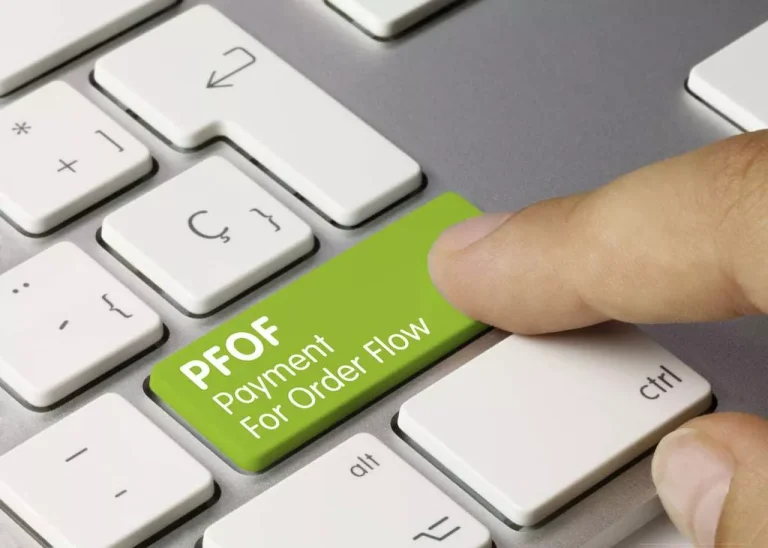Content
Furthermore, as this signing protocol does not use the Paillier modulus, we avoid the necessity for the zero-knowledge proofs. Moreover, as noted in [CCLST], a class group-based custody solutions for crypto scheme with the same security level significantly reduces bandwidth consumption compared to other approaches. However, since the signing protocol is based on a group of unknown orders, it is needed zero-knowledge proof for the correction of the encryption in this scheme.
Financial Tokenization & NFT Minting
In contrast, direct custody gives institutions greater control over client relationships and the flexibility to adopt innovative security technologies and trading options. Notably, the nature of digital assets means that secure custody is even more critical than for traditional financial assets. Digital assets such as cryptocurrencies are created and transferred between owners using cryptography and a decentralized network called a blockchain. Owners acquire digital assets in transactions recorded on the blockchain, and those transactions are typically the only documentation of the assets’ existence. Constant function market maker The owners are issued cryptographic keys that prove their ownership of the assets, to be used when transferring them between owners or using them to buy things.
Digital asset custody and transaction processing leading practices using Fireblocks’ MPC solution
The U.S. framework is particularly significant due to the size of its financial markets and its influence on global regulatory standards. The SEC has specifically noted that cryptocurrency exchanges do not automatically qualify as custodians, highlighting the importance of proper licensing and regulatory compliance. This distinction has become a model for other jurisdictions, emphasizing the need for specialized custody frameworks, rather than general cryptocurrency service provider regulations. Crypto custody is evolving due to blockchain advancements, increasing digital asset users, and cyber-attack threats. Key features https://www.xcritical.com/ include advanced security measures, support for technological advancements, scalability for higher transaction volumes, and regulatory compliance. Decentralized custody solutions distribute private key control across multiple parties or smart contracts, reducing the risk of single points of failure.
Blockchain in Banking: Use Cases and Examples
Ever since Bitcoin’s release in 2008, blockchain and cryptocurrency has emerged as one of the fastest proliferating industries of our times. Every day, several projects with immense potential are being launched around the world. In turn, there’s an exponential rise in the value generated and locked in the sector. Understandably, such immense value needs to be secured, and in this regard, blockchain’s inherent security features might not be enough. As financial services continue to adapt, the role of digital asset custody becomes more important, transforming approaches to financial responsibility in the context of digital assets.
Cryptopedia. Your trusted source for all things crypto.
A threshold signature scheme (TSS) is a signature scheme where a group of parties collectively compute a signature without learning the private key. In a (t,n) -threshold signature scheme, n parties hold key shares, and any subset of t parties can generate a signature, but no group smaller than t parties can perform this task. TSS key generation depends on distributed key generation (DKG) protocol, in this way, no party can learn the private key when they generate key shares. The ultimate goal of using crypto custody services is to protect cryptocurrency assets against theft and loss. We provide you with the peace of mind that comes from knowing your digital assets are protected legally. Coinbase Custody helped a client recover millions after their private keys were accidentally destroyed, showing the value of institutional-grade services.
Make an informed decision to secure assets, optimize performance, and comply with regulations. Crypto assets are a lucrative target for cybercriminals, and despite robust security measures, the risk of hacking, phishing, and other forms of cyber-attacks remains a constant threat. Ensuring the continuous development of security measures to keep pace with advancing cyber threats is challenging for crypto custody providers. Firstly, regulatory frameworks often require these institutions to entrust their assets to a qualified custodian. This is to prevent misappropriation of assets and to protect the interests of the investors or clients of these institutions. Crypto custody solutions fulfill this need by providing compliant and secure asset storage.
Hardware wallets, combined with secure backup storage in locations like safety deposit boxes, ensure access to assets in emergencies. Custodial wallets are managed by third-party providers, while non-custodial wallets give users control over their private keys. Custodial wallets, like bank accounts, allow users to access funds via a provider’s platform but carry risks of centralized hacks, such as the 2014 Mt. Gox incident. With some custody offerings, the owner may not know or have direct access to the private keys. If the owner forgets their password, the custodian can verify their identity so they can regain access and ensure they don’t lose their digital assets. Accordingly, investors are looking for digital asset custodians that can provide the same kind of robust services and protection that they’ve enjoyed for traditional assets such as cash, stocks and bonds.
Multi-Party Computation (MPC) – MPC is a process that splits a private key into key shares, which can then be distributed across multiple devices and parties. Through cryptography, these shares will be allowed to jointly execute an order based on their inputs while keeping those inputs private and encrypted. The entire key is never fully assembled in one place, even during its generation, which prevents a hacker who gains access to just one device from ever obtaining the full key. Moreover, MPC generates a standard digital signature, making it compatible with any blockchain and asset. Also, it does not reveal any information about the signers involved in the transaction.
Crypto custody plays a crucial role in bridging the gap between the traditional financial sector and the emerging crypto market, facilitating its development. Crypto custody involves transferring cryptocurrency keys to the custodian, who secures them using enterprise data storage techniques. Most providers will likely use a combination of cold and hot storage to secure cryptocurrency but also provide a way to access it. MPC CMP is analyzed within the Universally Composable (UC) Securityframework, [CMP20]. The protocol achieves an ideal threshold signature functionality within the UC framework, operating in the global random oracle model.
- We recommend exploring the following areas as part of your research into service providers.
- In CMP and CGGMP protocols, such vulnerabilities have been addressed using zero-knowledge range proofs.
- Bitcoin service providers such as Onramp offer a multi-institution custody framework that integrates the best elements of traditional security protocols with the resilience of bitcoin’s decentralized architecture.
- Gemini, a New York based crypto custodian, was first announced in June 2013 and went live on October 25, 2015.
- As financial services continue to adapt, the role of digital asset custody becomes more important, transforming approaches to financial responsibility in the context of digital assets.
Having understood the definition and significance of custody services, let us now discuss some of the best in class crypto custodian projects. As a user or project owner, you must choose one that is the best-suited to your specific requirements. Cold storage is widely considered to be more secure than hot storage because this option doesn’t involve an internet connection.
Crypto custody involves the secure storage and management of digital assets while safeguarding private keys — the indispensable components of crypto wallets. These intricate alphanumeric combinations serve as cryptographic passwords, granting access to an individual’s cryptocurrency holdings. Modern custody solutions have also expanded to incorporate yield-generating opportunities, particularly through staking services. Regulated custodians now offer institutional clients the ability to participate in proof-of-stake networks while maintaining security and regulatory compliance.

If you decide that a partial or third-party custodian is right for your needs, it’s important to research your options thoroughly to make the most secure choice. We recommend exploring the following areas as part of your research into service providers. Fireblocks, while not requiring a custody license as an infrastructure provider, has completed SOC 2 Type 2 audit certification. They specialize in providing secure infrastructure and multiparty computation technology, supporting their partner network across multiple jurisdictions. Gemini Custody holds licenses as both a qualified custodian and fiduciary under New York Banking Law. They charge a 0.4% annual fee plus $125 for withdrawals, providing independently verifiable blockchain addresses for asset segregation and $75 million in cold storage insurance coverage.
Last but not least, the authors achieve their goal that the protocol improves upon existing Paillier-based implementations, achieving similar objectives while reducing bandwidth consumption by a factor of up to 10, [CCLST]. We want our readers to share their views and exchange ideas and facts in a safe space. His work has been featured in the New York Times, USA Today, Fox Business Network, Wall Street Journal All Things Digital, the Atlantic Podcast, and more.
Any of these events could render the assets inaccessible, even if the bitcoin itself is still visible on the blockchain. In a market that values speed, security, and autonomy, many institutional investors consider this an unacceptable risk. This option is akin to the first, with the distinction that it entails trading on Binance through sub-accounts managed by a prime broker, such as Hidden Road. Additionally, Hidden Road provides optional exchange insurance to safeguard against exchange defaults, typically quoted at an annual premium of 5%.

Digital asset custodians do not actually hold digital assets; instead, they store and safeguard the owner’s cryptographic private keys. These keys are stored and managed in customizable cryptocurrency wallets, which may be either connected to the internet (known as hot wallets) or physically isolated from it (known as cold wallets). Regardless, custodians manage these keys and authorize transactions on behalf of clients, directly engaging with brokers, dealers, and exchanges to trade their clients’ funds. However, it is quite important to choose a crypto custody service provider carefully after a lot of consideration. First of all, you need to check the usability of the crypto custody solution and the ease of understanding the functionalities. In addition, you should also look for flexibility of methods for using the crypto custody solutions as hot wallets and cold wallets.
